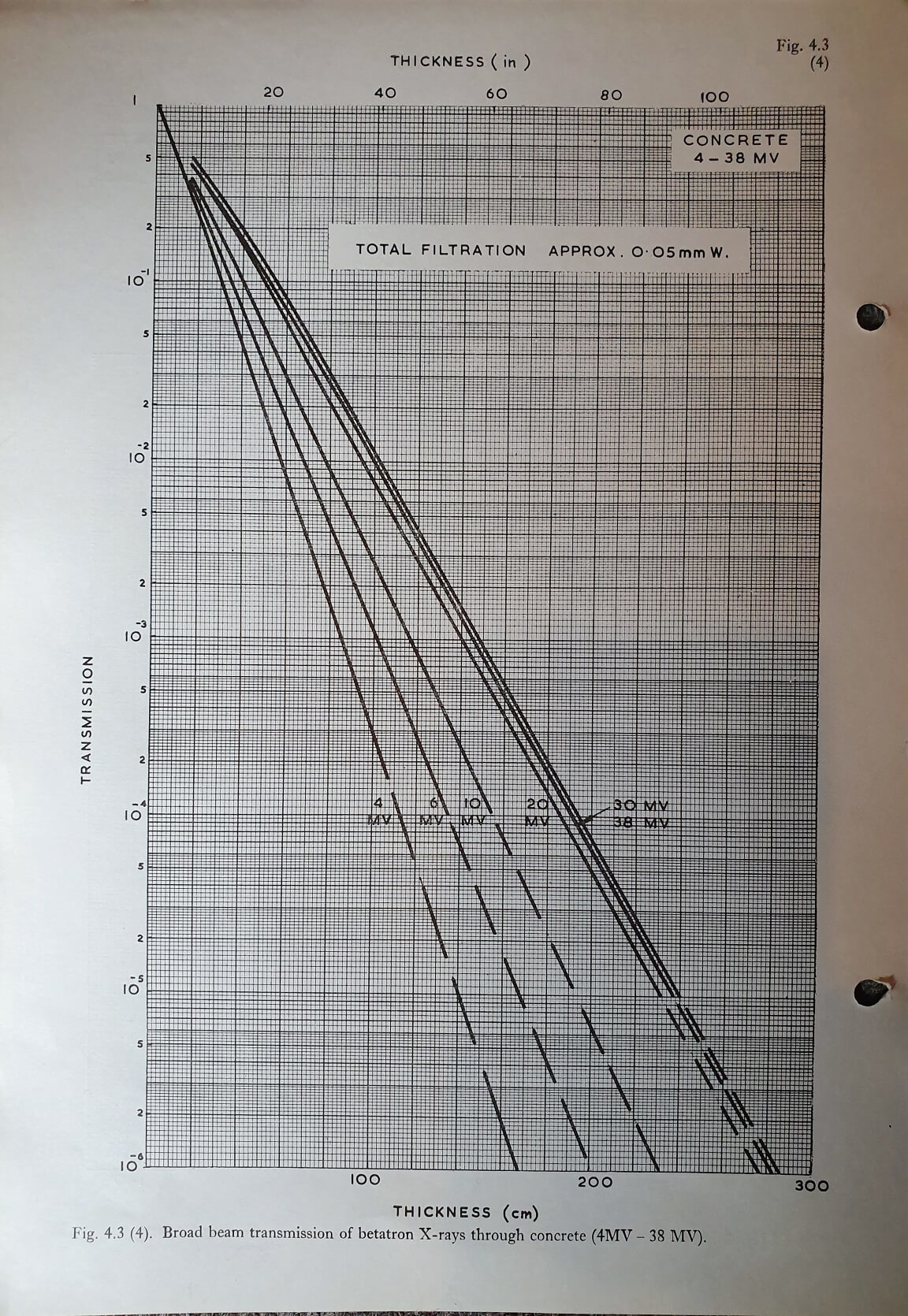Broad beam X-ray (Betatron) Transmission through Concrete (4-38 MV) Fig 4.3(4)
Published: Sep 29, 2021

Reality check example 1 (10 MV)
Take a look at the 10 MV line above. It crosses the x-ray axis at 232 cm standard density concrete (with extrapolation). This is for 10-6 transmission which is broadly equivalent to 6 TVL (10th value layers). The equilibrium TVLe for a 10 MV linac (FF) is reported in typical literature (IAEA / NCRP) as being 38cm of standard density concrete (2.35). Therefore 6 TVL would be 228 cm concrete which is pretty close to that reported above.
However, we can go one stage further. There will be spectral energy changes when a primary beam of x-rays first penetrates the shield. This has the effect of making the first TVL (TVL1) slight larger and the literature reports 41cm. So we actually have 1 TVT1 + 5 TVLe = 231cm. This is remarkably close to the value we obtained from the above graph. It would not be surprising if this 1971 published data, and other data like it, have found its way into modern publications today.
Reality check example 2 (6MV)
Using similar analysis as shown in example 1, we also look at the 6MV data line above. This shows around 202 cm concrete for a 10-6 transmission. Typical data in modern publications (IAEA / NCRP) for a 6MV FF linac are TVL1 (37 cm) and TVLe (33 cm). Therefore using this TVL data we calculate 202 cm (1 TVT1 + 5 TVLe = 202 cm), which is exactly the same as shown on the graph. Aged physics, is after all, physics.
